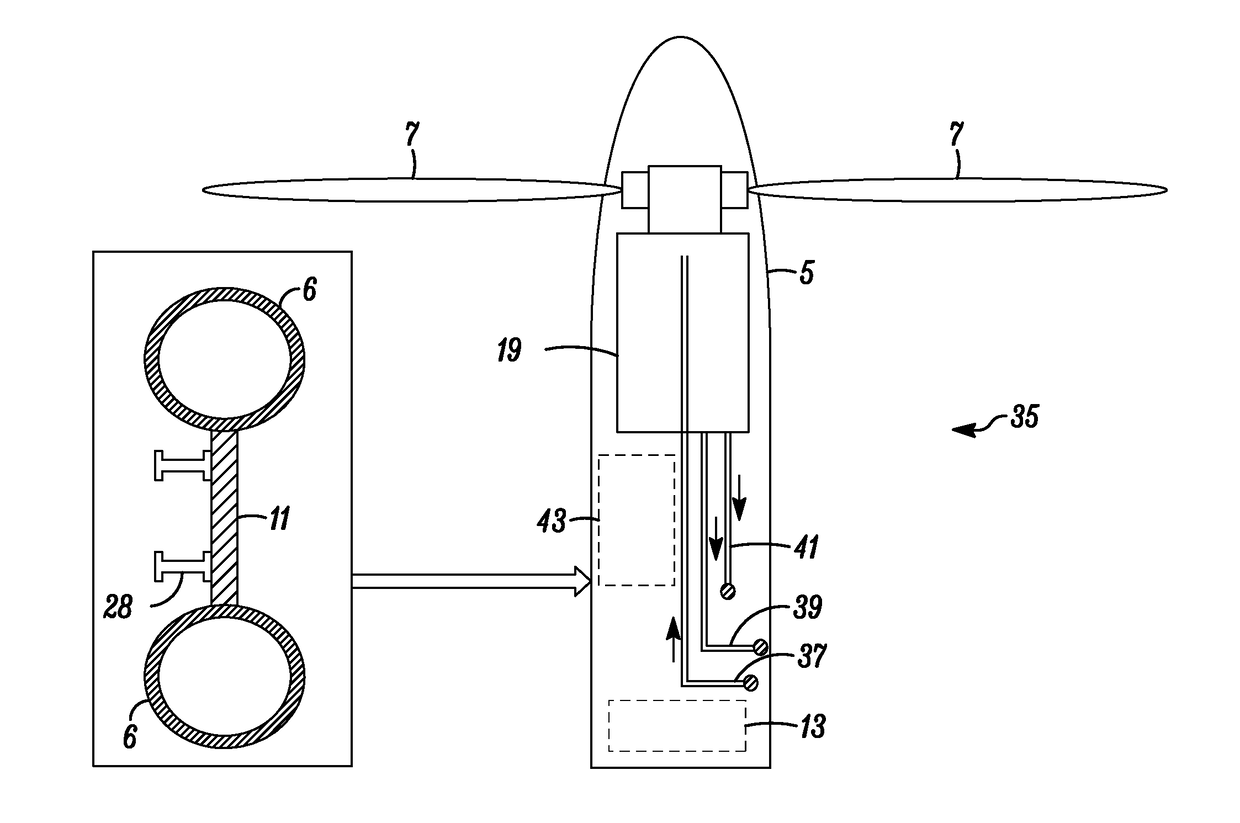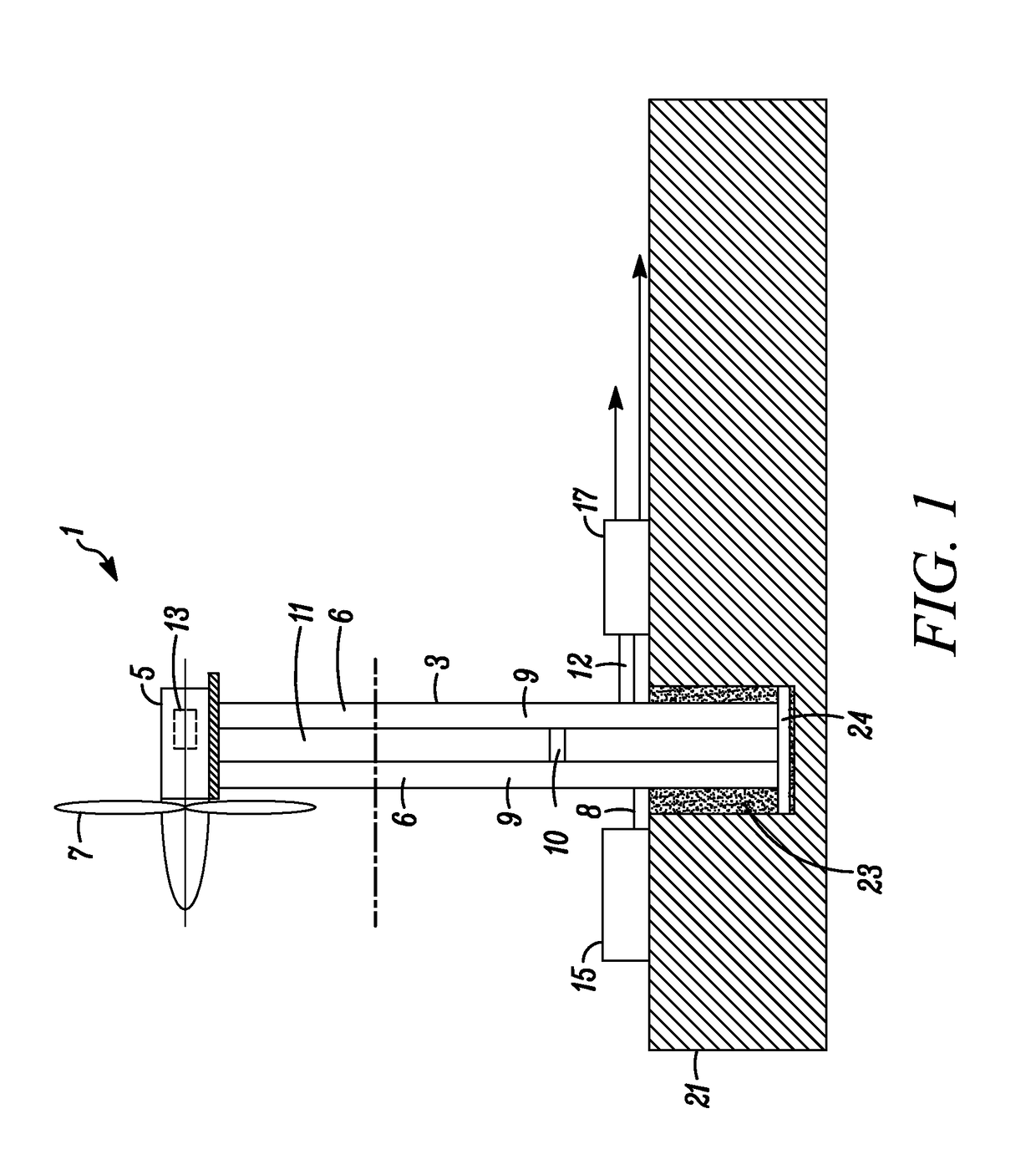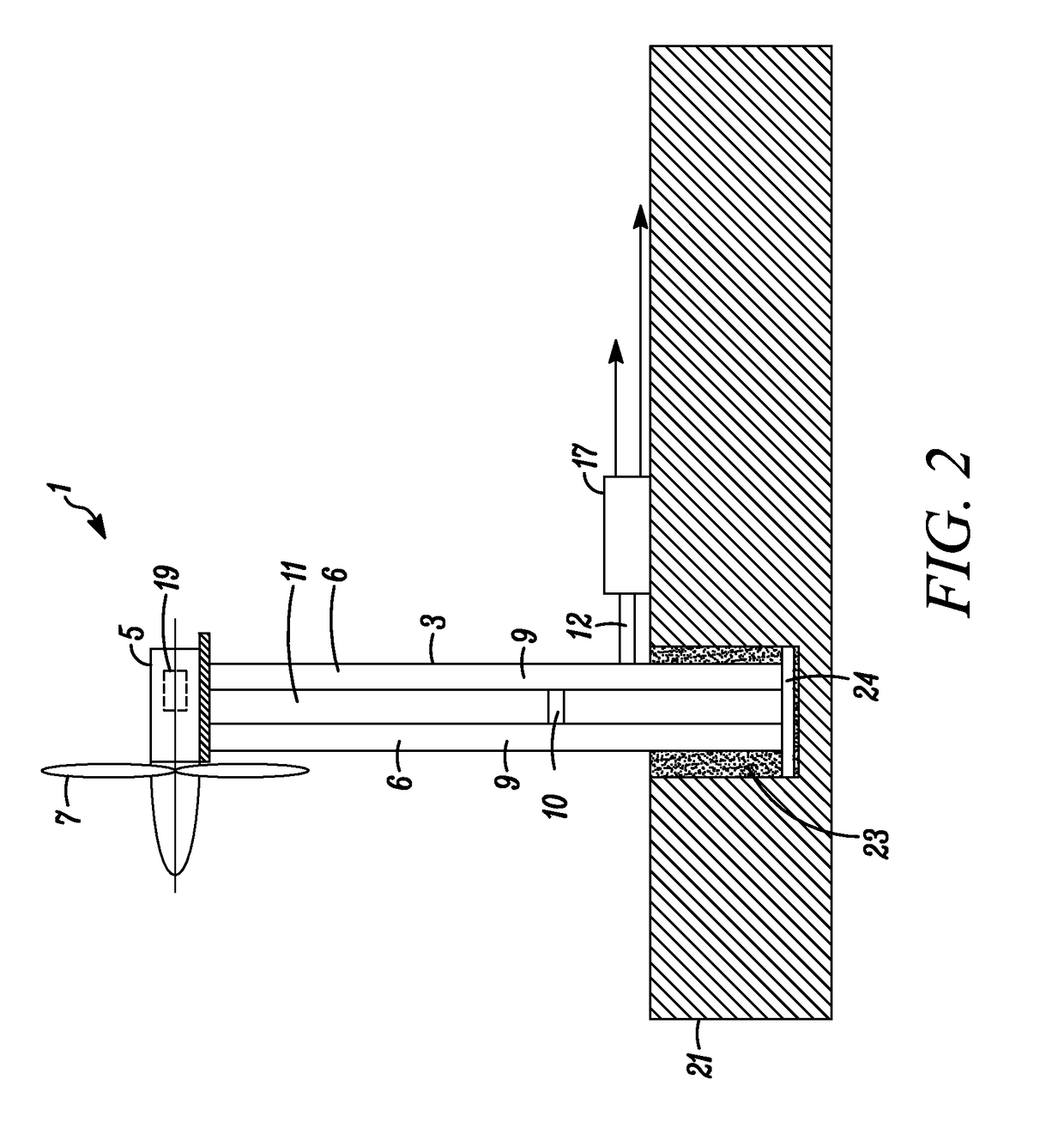Wind turbine station and tower with vertical storage tanks
a technology of vertical storage tanks and wind turbines, which is applied in the direction of machines/engines, mechanical equipment, greenhouse gas reduction, etc., can solve the problems of increasing the cost of overhead or underground cables from the nearest grid to the end user, increasing storage tanks, and increasing the height of wind turbine blades. , the effect of increasing the cost of installation and eliminating the cost of separate towers
- Summary
- Abstract
- Description
- Claims
- Application Information
AI Technical Summary
Benefits of technology
Problems solved by technology
Method used
Image
Examples
Embodiment Construction
[0043]FIG. 1 shows a wind turbine station 1 and tower 3 of the present invention wherein a wind turbine drive mechanism is located inside a nacelle 5 located on top of tower 3, and wind turbine blades 7 are connected thereto and allowed to rotate. Tower 3 preferably comprises two large vertically oriented storage tanks or vessels 9, which are extended upward from the ground, and which serve to not only support the wind turbine blades 7 high in the air, but also to provide storage volume space for the compressed air energy produced by station 1.
[0044]In the preferred embodiment, at least two vertically oriented tanks or vessels 9, extended parallel to one another, with their longitudinal axis extending substantially vertical, are provided and installed per tower 3, although not necessarily so, i.e., a tower 3 can have one tank or vessel 9, but preferably two or more tanks or vessels 9, as will be discussed. Preferably, as shown in the cross section drawing of FIG. 3, two tanks or ves...
PUM
 Login to View More
Login to View More Abstract
Description
Claims
Application Information
 Login to View More
Login to View More - R&D
- Intellectual Property
- Life Sciences
- Materials
- Tech Scout
- Unparalleled Data Quality
- Higher Quality Content
- 60% Fewer Hallucinations
Browse by: Latest US Patents, China's latest patents, Technical Efficacy Thesaurus, Application Domain, Technology Topic, Popular Technical Reports.
© 2025 PatSnap. All rights reserved.Legal|Privacy policy|Modern Slavery Act Transparency Statement|Sitemap|About US| Contact US: help@patsnap.com



